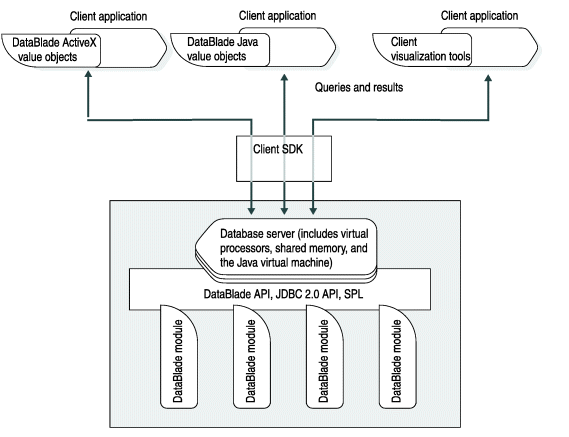DataBlade® modules and the database server
This section describes the overall architecture of the HCL Informix® database server, how DataBlade® modules affect database server processes, and the application programming interfaces you can use in your DataBlade® modules and client applications.
The following figure illustrates the following components of the Informix® database
server architecture when it includes DataBlade® modules:
- DataBlade® modules, which extend the capabilities of the database server
- DataBlade® module application programming interfaces, which allow DataBlade® modules access to data stored in a database
- The database server, which includes virtual processors that your Informix® database server uses to process tasks, the shared memory that these virtual processors use, and the Java™ virtual machine to process routines written in Java™
- The Informix® Client Software Development Kit, which includes client-side APIs that enable you to write client applications that access data stored in a database
- DataBlade® module ActiveX and Java™ value objects, which enable you to provide client-side interfaces to extended data types and their support routines
- Client visualization tools, which enable you to view and manipulate data retrieved from DataBlade® modules with third-party applications
- Client applications, which allow the user access to DataBlade® module
functions and data stored in a database
Figure 1. HCL Informix® with DataBlade® modules 
The close integration of DataBlade® modules
with the database server means that the database server treats new,
extended data types in the same way that it treats its own built-in
data types.
Important: You must use the J/Foundation option
of HCL Informix® to
enable services that use Java™.
For more information about J/Foundation,
see the J/Foundation Developer's Guide.